david-seddon.com
Ich bin ein Berliner

I decided to go to Berlin from Copenhagen via bus as after my last train experience I couldn’t trust them just yet. Plus the bus was a lot cheaper (€25 for the bus compared to €144 at the cheapest for the train), and as it turned out a lot nicer.
Unlike the uncomfortable Norwegian trains I had a comfy seat and 2 power sockets all to myself. This was luxury, this was living! It’s also the first time in this journey I was on a ferry, which I really enjoyed. You’re on the bus for a bit, trundling through the rainy Danish scenery and then you board a ferry and can wander around, even go out on deck. This is something I’m not used to and the novelty did not wear off. There’s something about being on a boat that makes you feel like you’re on a proper adventure; you’re Travelling, and it’s an experience bus or train can’t really compete with.
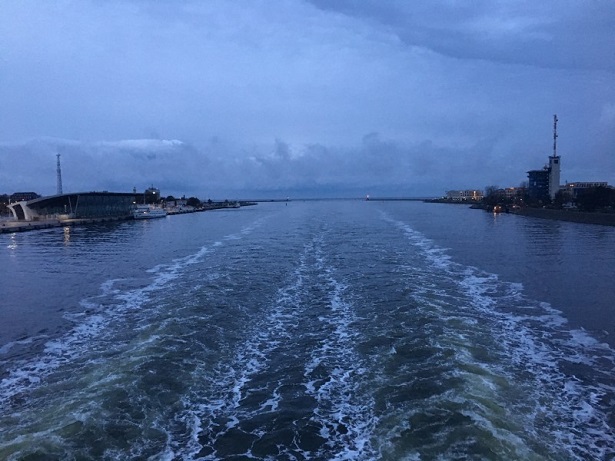
It’s also really nice being able to stop mid-journey and go do something else for a bit rather than just sit down and look out of a window. The ferry had hot food, a duty-free shop and a coffee place. I was kind of tempted by hot food, but at €13 for a portion of fish and chips that didn’t even look great in the picture I decided it wasn’t worth it so I ate a massive bag of crisps instead and watched the waves. I contemplated yelling “PIRATES!” or “ICEBERG!” but I didn’t think it would go down all that well.
The voyage passed all too quickly for me and soon we were on the autobahn which was another first for me and it was pretty exciting to be speeding along at a rate much faster than I’m accustomed to by bus headed towards Berlin. I wasn’t really sure why I’d decided to go to Berlin. I’ve been interested in the Second World War and the Cold War for some time, and Berlin is pretty central to both so I’m pretty sure my inner history nerd took control. Still, at €42 for the hostel for 4 nights it was at least reasonably priced.
One of the difficulties for the traveller arriving in a new place is figuring out the public transportation system, and here I was a bit flummoxed for a couple of reasons. I had no clue what an “S-Bahn” or a “U-Bahn” was, or indeed how to find them. I eventually figured out that the S-Bahn has a giant green “S” sign and the U-Bahn has a giant blue “U” sign because I’m clever like that.
The other thing that confuses me (and I feel this is a genuine problem, not just me being an idiot) is the various zoning the tickets for public transport systems have. In my case I’d arrive quite late in the evening, I don’t know the city and I had no clue what combination of zones A, B, or C I needed to buy. The Underground in London had similar problems for me until I noticed the map showing what stops were in what zone, but I couldn’t find something similar here. I feel like these systems could use a button marked “I don’t really know what I’m doing just yet, could you give me a ticket that is least likely to get me into trouble?”.
Still, I managed to navigate the system first time without having to backtrack, so at least that was something. I even managed to find the hostel without too much drama.
At the reception there were the most friendly receptionists yet although having confided in me that they were really bored I suspect I was just a distraction. The hostel was really quiet, they informed me, so I was hopeful I’d get a half-full room but no, it was a full 8 person room (I thought I’d booked myself into a 6 person room; now the €42 was beginning to make sense). In contrast to the receptionists this was the most unfriendly room yet, with everyone just sat looking at their laptops. I reassured myself that at least that made me the Coolest Person In The Room (a new travel game I’ve invented) and then sighed as I realised I was again in the top bunk.
This was my second-worst dorm room, there was very little privacy (if I moved my feet I could see the head of the guy in the next bed) and no accessible power sockets. I was beginning to regret being here for six days.
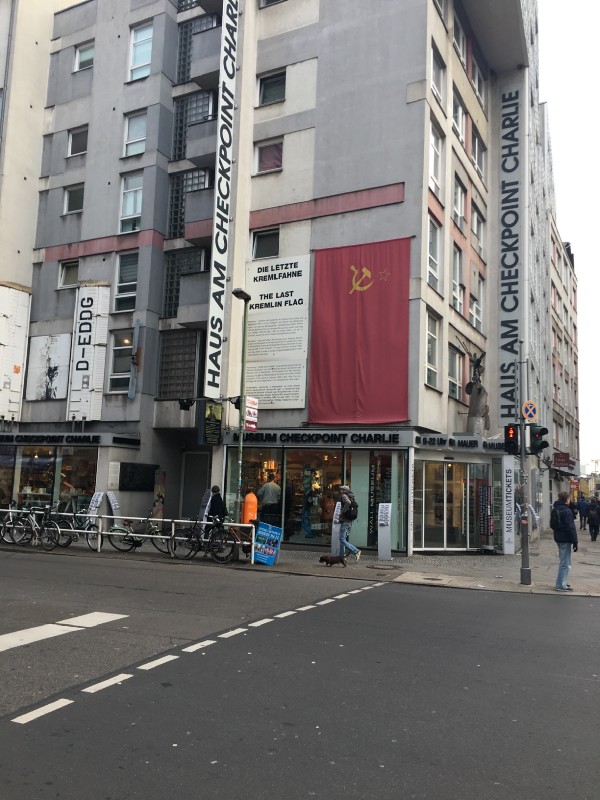
After a fairly bad nights sleep I left early to go explore, and the first thing I saw from the S-bahn was a sign for Checkpoint Charlie. Checkpoint Charlie! Despite being a massive history nerd somehow I’d completely forgotten about the Berlin Wall. Needless to say I hopped off the S-bahn, feeling very cosmopolitan, and made my way up.
It turned out there was a whole museum about the checkpoint, the politics surrounding it and how people got around it. After a brief but embarrassing attempt to buy a ticket in the gift shop I handed my passport over in exchange for an audio guide and went in.
I don’t have any photos from inside (for some reason you had to pay for permission, which I wasn’t keen on doing and thought I’d better not sneakily take some, lest I be whisked away by the Stasi and sentenced to hard labour) but if you’re in Berlin and are interested in Cold War era history I heartily recommend it. Growing up in a free country (for a given definition of free anyway) it seems unreal to think that your state can not only tell you not to go somewhere, they can and did physically stop you and went to quite some lengths to do so.
Thinking sobering thoughts I recovered my passport and went for a coffee to fortify myself for the next activity. I wish my German were better, it’s about all I can do to ask for “eine kaffe, bitte” but gosh if it isn’t a terrifying language for the one who doesn’t know it. I think I walked in on an argument between customer and barista about soy milk and the barrage of German from the customer sounded very intimidating. I nearly offered to do something to help, or at least appear to help, just to bring the argument to a close. To the barista’s credit he was completely unflustered, responding with an occasional “ja”. I suppose you must get used to it after a while but I made a mental note to anger as few Germans as possible.
Listening to an angry German was probably not the greatest thing to do before my next stop, the Topographie des Terrors, a documentation centre and museum on the site of some of the former offices of the Nazi security apparatus.
It’s an incredible place, documenting some of the activities of the SS and Gestapo and the actual people involved. One of the things I found from visiting is how chillingly systemic all the atrocities were and the segregation of vast amounts of people. It’s one thing to hear about all the millions of people that died, but it’s when you see the documentation giving orders, describing how they were carried out and so on that really drives it home that these weren’t some madmen doing it, rather, that they were some madmen in charge of an entire nation with the power do do whatever they wished.
I mean imagine, if you will, that as a head of a government organisation you knew there was going to be an outpouring of violence against a group of people. Rational people (and you’re a rational person, I can see that from here) would try to stop it, or increase security, or something. Documented Nazi policy was to make sure the police contain it so it only affected the Jews, and no-one else. That was Kristalnacht, a night of violence against the Jews. Utter madness.
The other thing I hadn’t realised was just how short the sentences were that some of the architects and implementors of this madness received. I was constantly reading that guard X was found guilty of participation in the mass murder of tens of thousands of people and sentenced to ten years, but only ended up serving three, or less. And this wasn’t one case, this was actually quite a common theme. Compare that to the amount of people who didn’t escape Nazi persecution.
I needed some light relief so the next day I headed for the Spy Museum. If you’re not aware, during the Cold War Berlin was basically Spy Central, with agents from the East and West hanging about, doing what spies do. It was actually great, not too heavy handed and an interesting walk through of espionage from ancient times to current day. I thought I’d managed to infiltrate the museum and not pay when I sneaked through an open door near the entrance, but it just contained posters.
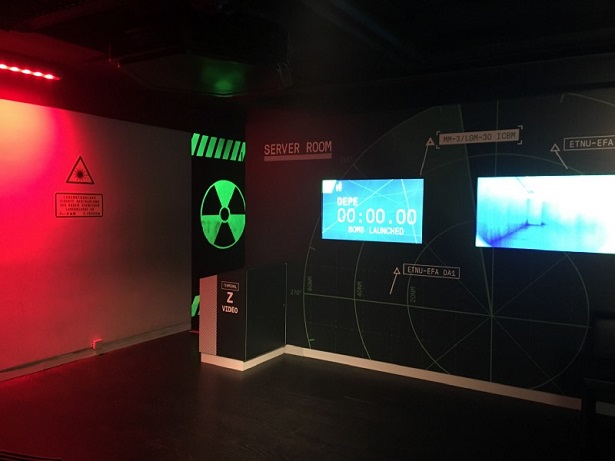
It also included a room where you have to dodge lasers, Mission: Impossible style to deactivate a nuclear bomb. I am not very good at this and I’m afraid to say if the UK ever relies upon my spying it’s not going to end well for us. It was enjoyable at least and I left a building in Berlin without thinking “fucking Nazis”, which was a novel experience.
Across the road from the Spy Museum is the Mall of Berlin (I feel they could have called it the “Berlin Mall” — they even had an “East Side” and “West Side” in the mall) which I went for a wander around. It’s a huge building, but you can’t help but think does it really need to be so big? The ceilings were so high and the corridors so vast and yet there seemed to be no-one about.
Still, at least I could buy a UK-to-Europe power adapter which meant I could now use my laptop (you might have noticed the Copenhagen story, and I think this one, are a little longer than the others. This is because I’m not using my phone to write these any more). This gave me something to do in the hostel, other than play the “avoid annoying guy who always wants to borrow Facebook” game. Maybe I’m being cynical but when someone borrows your phone and barely talks to you they might, just might, be using you for your phone.
I’d planned on doing the Sachsenhausen concentration camp tour but I was in two minds on the day; it was 6 hours, I had a migraine and I felt like maybe I’d had too much death and destruction and horror. On the other hand I wasn’t sure what else I’d do, I had no desire to hang around the hostel and everything else seemed awkward to get to. I decided to go.
Having travelled to the pickup point and met the group (it was a small group of about eight of us), we went to the train station to get the train out (it’s not located in central Berlin for obvious reasons) only to discover the train was cancelled due to an unexploded World War 2 bomb near the line. According to the guide this was the first time in 10 years that a tour’s been cancelled because of this. Typical.
Still, we were offered a 3 hour Third Reich tour of Berlin and a refund, which I thought was a really good deal so went for it, and I’m rather afraid I nerded out quite a bit. I don’t know if you do many tours but there’s sometimes That Guy on the tour who asks a lot of questions and is kind of a teachers pet, but on this tour I was That Guy (I know, I’m usually so cool!).
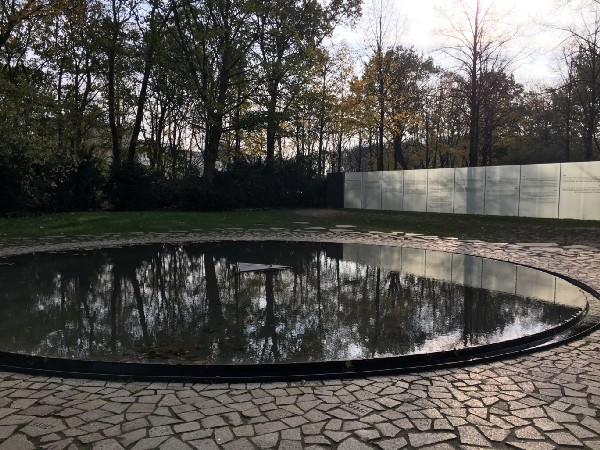
We went to the Reichstag, memorials to the fallen Soviet soldiers, Jews, Roma and Sinti, Brandenburg gate, the bombed Anhalter station, the New Synagogue and ended up at the Otto Weidt museum, with me asking questions all the way. It was very informative, our guide really knew his stuff and I was in nerd heaven. I almost felt sorry for the poor American girl who’d obviously been dragged along by her boyfriend and looked cold and bored and tired.
Incidentally, if you’ve not heard of him, Otto Weidt was a German who ran a brush workshop employing the deaf and blind, and he used his position to protect the Jews who worked for him. As he made brushes for the Wehrmacht, he could claim that his workshop was vital to the war effort, and the people who worked for him were too. I think that’s just great. The museum was the site of his workshop and it was fantastic and free, so if you’re in the neighborhood give it a whirl.
I’d done a lot of museums but I hadn’t been to Museum Island yet, which was a mistake, I should have gone there first as there’s so much to see. The Pergamon is fantastic, particularly the Middle East section housing the Ishtar Gate from the ancient city of Babylon and the Market Gate of Miletus which was very impressive.
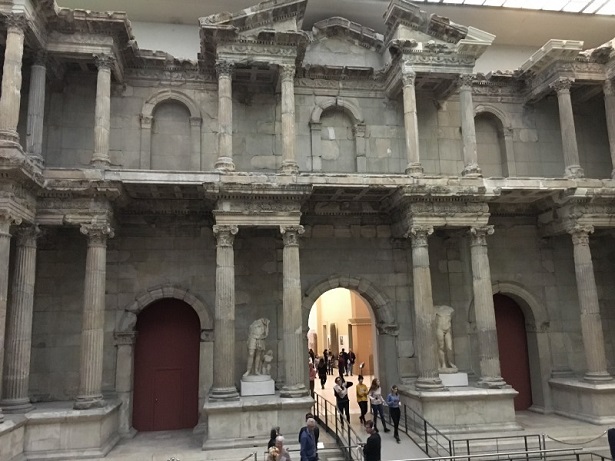
Sadly I didn’t get time to go check out all the museums, and in fact it was about time to leave Berlin. At first when I arrived I thought the city was a bit grimy, a little run down and not at all what I’d expected, but as I spent more time there I realised that Berlin is in fact a lot of different places.
Where I stayed, in the east of the city, it’s very Stalinist architecture, strangely oppressive, functional. I felt I should be wearing an overcoat and saying “guten morgen, kamerad” to everyone I passed in the street. I made the mistake of thinking most of the city’s like that, when in fact it’s not. It’s very different to the area around the Reichstag or Hackescher Markt or the New Synagogue or a load of other places and it’s a really cool place to just travel around and see all the differences. It must be fantastic to live there.
The U-Bahn and S-Bahn public transport system is very efficient too. More than once a train was cancelled and I immediately assumed this would mean I’d have to find another route. Every time though it just meant I needed to wait about 5 minutes for the next one which was fine. I was even confident enough with the system that when people asked me for directions or what to do when the train was cancelled. I’m not certain their asking me of all people was the wisest strategy but I was able to help which came as something of a surprise.
I ended up loving Berlin. I should have stayed longer really, I had a load more things I wanted to do but ran out of time. It really is a fantastic place, and one I’ll definitely come back to. Written on November 14th, 2017 by David Seddon